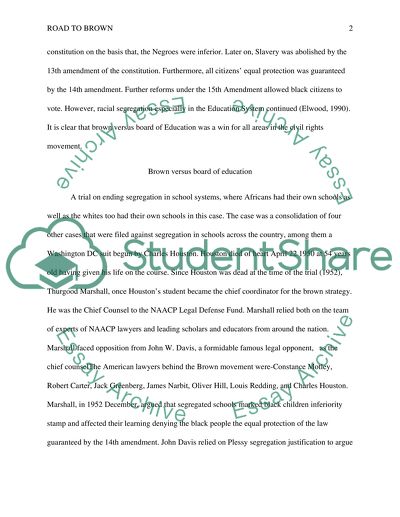Cite this document
(“Road to Brown: Brown versus Board of Education as a Fight for Racial Movie Review”, n.d.)
Road to Brown: Brown versus Board of Education as a Fight for Racial Movie Review. Retrieved from https://studentshare.org/education/1445719-road-to-brown-brown-versus-board-of-education-as-a-fight-for-racial-desegregation
Road to Brown: Brown versus Board of Education as a Fight for Racial Movie Review. Retrieved from https://studentshare.org/education/1445719-road-to-brown-brown-versus-board-of-education-as-a-fight-for-racial-desegregation
(Road to Brown: Brown Versus Board of Education As a Fight for Racial Movie Review)
Road to Brown: Brown Versus Board of Education As a Fight for Racial Movie Review. https://studentshare.org/education/1445719-road-to-brown-brown-versus-board-of-education-as-a-fight-for-racial-desegregation.
Road to Brown: Brown Versus Board of Education As a Fight for Racial Movie Review. https://studentshare.org/education/1445719-road-to-brown-brown-versus-board-of-education-as-a-fight-for-racial-desegregation.
“Road to Brown: Brown Versus Board of Education As a Fight for Racial Movie Review”, n.d. https://studentshare.org/education/1445719-road-to-brown-brown-versus-board-of-education-as-a-fight-for-racial-desegregation.


